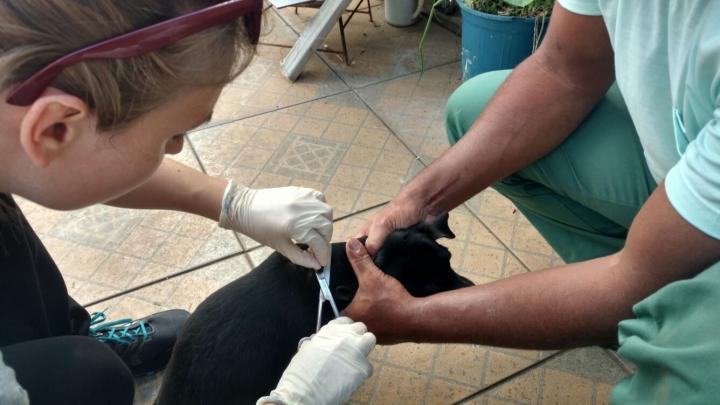
Credit: Monica E. Staniek
Dogs infected with the Leishmania parasite smell more attractive to female sand flies than males, say researchers.
The study published in PLOS Pathogens is led by Professor Gordon Hamilton of Lancaster University.
In Brazil, the parasite Leishmania infantum is transmitted by the bite of infected female Lutzomyia longipalpis sand flies.
Globally over 350 million people are at risk of leishmaniasis, with up to 300,000 new cases annually. In Brazil alone there are approximately 4,500 deaths each year from the visceral form of the disease and children under 15 years old are more likely to be affected.
Leishmania parasites are transmitted from infected dogs to people by sand flies when they bite. Visceral leishmaniasis affects the internal organs and is fatal if not treated.
As only female sand flies transmit the parasite, researchers wanted to understand if infection made dogs more attractive to the insect.
Professor Gordon Hamilton of Lancaster University said: “In this study we showed that infected dog odour is much more attractive than uninfected dog odour to the female sand flies. Only the females can transmit the pathogen and male sand flies, which do not transmit the parasite, are not affected by the changed odour.
“This clear-cut difference in attraction of female and male sand flies suggests that the females are preferentially attracted by parasite infected hosts and this could lead to enhanced infection and transmission opportunities for the parasite.”
The researchers had previously found that dogs infected with Leishmania parasites smelled different compared to uninfected dogs.
Professor Hamilton said: “Domestic dogs are the reservoir of infection, therefore understanding how the infection affects the attractiveness of dogs to the insect vector is important in understanding the epidemiology of the disease and offers opportunities for new control and diagnostic methodologies.”
###
Media Contact
Gillian Whitworth
[email protected]
Related Journal Article
http://dx.




